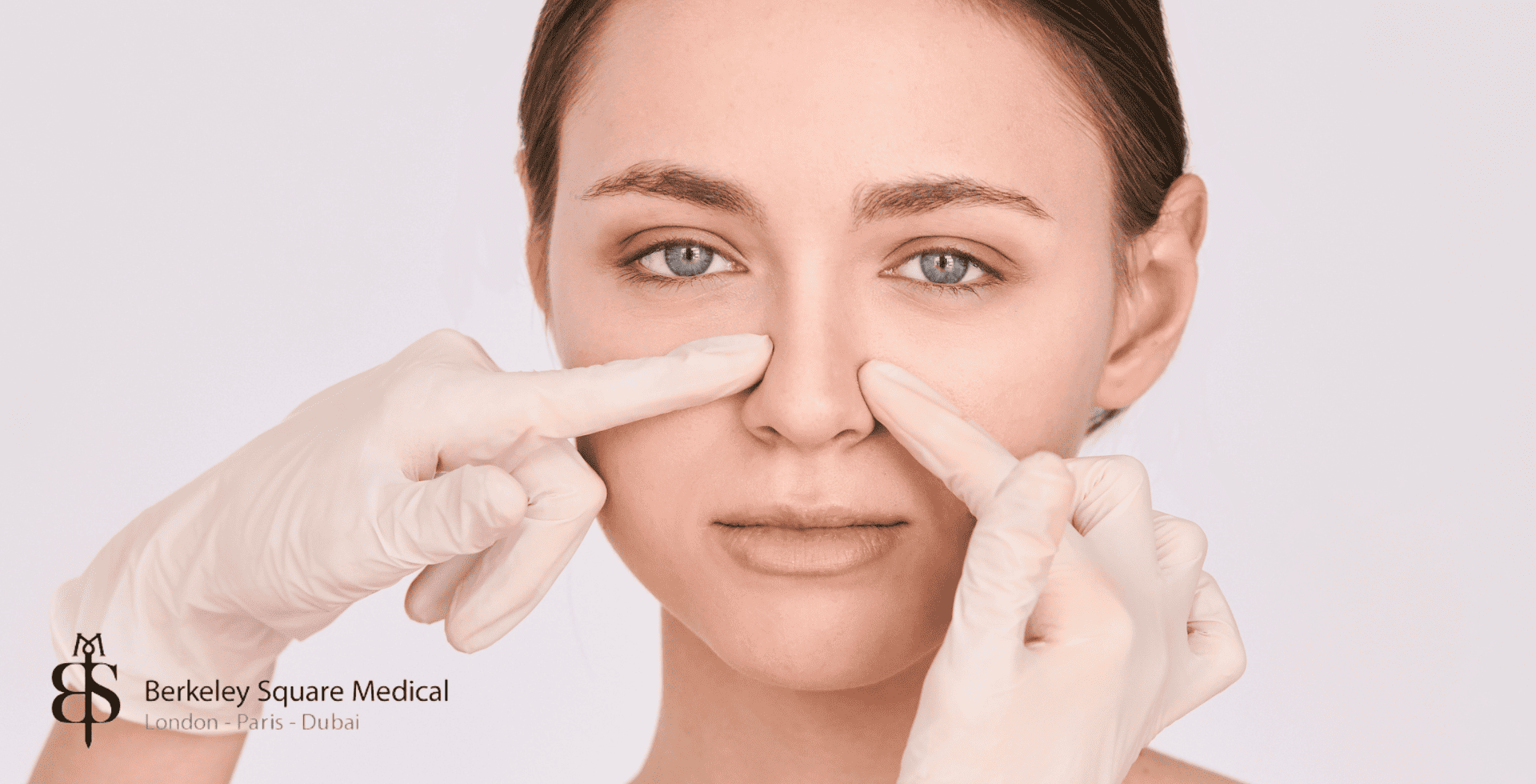
Uneven or asymmetrical nostrils are a common concern after rhinoplasty. In most cases, it’s due to swelling and will improve over time—but some cases may need filler or revision surgery.
You might be here because you are considering rhinoplasty, and want to learn about the potential consequences of the surgery or you have already had the nose job and now have uneven nostrils. In this blog post, we will discuss what causes crooked nostrils, and how you can deal with the issue if it arises.
Uneven nostrils after rhinoplasty are common and often caused by swelling during the healing process.
Most nostril asymmetry improves on its own within the first 3–6 months after surgery.
Other causes include scarring, cartilage shape, or rare nerve damage, especially if the surgery was complex or revision-based.
Temporary treatments like dermal fillers can be used to correct minor asymmetry while healing.
More persistent or severe unevenness may require revision surgery, but this is usually delayed until at least 6–12 months post-op.
Choosing an experienced rhinoplasty surgeon is the best way to reduce the risk of long-term nostril asymmetry.
Whether you’re noticing crooked nostrils, nostril asymmetry, or unevenness after rhinoplasty, it’s often part of the normal healing process and may improve on its own. The most common cause is swelling. When tissue is manipulated or removed, it can lead to asymmetry in the healing process. This swelling can last for weeks, or even months in some cases.
In addition to swelling, scarring can also contribute to uneven nostrils after surgery. If the surgeon is not careful, or if the patient experiences excessive swelling, scars can form that lead to an uneven appearance.
Finally, nerve damage is also a potential cause of asymmetrical nostrils after surgery. This is a rare complication, but it can occur if the surgeon damages nerves during the procedure.
If you are considering rhinoplasty, and have concerns about uneven nostrils as a potential outcome of the procedure, it is important to work with an experienced surgeon who can help minimise risk.
The best way to avoid surgery complications is by choosing someone who knows what they are doing. In addition, if you experience swelling after surgery, it is important to follow your surgeon’s instructions carefully.
This will help reduce the chances of uneven nostrils as a result of swelling.
If you do experience asymmetry after surgery, there are a few things that you can do to help improve the appearance of your nose.
One option is filler injections. In some cases, injecteable fillers can help reduce the appearance of asymmetry in the nose. This is a quick, and non-surgical option that can help minimise uneven tissue while you wait for swelling to subside.
Another option is revision surgery. If your nostrils are too far apart after rhinoplasty, this may require additional surgery with a specialist to fix the issue.
This is generally a last resort because it will require more downtime and additional expense. However, it can be a good option if you are concerned about your appearance after surgery or experiencing pain as a result of asymmetrical nostrils.
Here’s what to expect during recovery:
It’s normal for one nostril to look larger, higher, or more open than the other in the first few weeks. Swelling is rarely even on both sides.
As swelling reduces, nostrils often begin to even out naturally. You may still notice small differences, especially when smiling or moving your face.
By this stage, the majority of healing is complete. Minor asymmetries often improve on their own without any treatment.
After 6 months, the shape of your nostrils stabilises. If asymmetry remains at this point, your surgeon may begin discussing treatment options like fillers or revision surgery.
Yes, it’s very common. Swelling after surgery often affects each side of the nose differently, making nostrils appear uneven. This usually improves as the swelling goes down over time.
Swelling, scar tissue, or slight differences in cartilage shape can make one nostril appear larger or sit higher. These differences often even out within the first 3–6 months.
Most unevenness resolves within 3 to 6 months. However, full healing can take up to a year. Your surgeon may suggest waiting at least 6–12 months before considering any revision.
Yes, in many cases. As swelling goes down and tissues settle, mild asymmetry often corrects itself without any additional treatment.
Yes, in some cases. Dermal fillers can be used to even out small differences in shape or volume while the nose continues to heal. This is a non-surgical and temporary option.
Revision surgery is usually considered if the asymmetry is still present after 6–12 months and is causing either cosmetic concern or breathing issues.
It depends. If the nostrils are uneven due to swelling or external shape only, breathing may not be affected. But if there’s internal blockage or cartilage collapse, it could impact airflow and may need correction.
If you have not had any nose surgery before, our primary rhinoplasty package covers resizing and reshaping your nostrils as well as any other corrective procedure you might need in order to achieve your preferred look.
The all-inclusive package price for the procedure is currently £6950.
If you need a revision procedure because you are unhappy with the results of earlier rhinoplasty surgery, you can expect the price to be between £6950 and £7450.